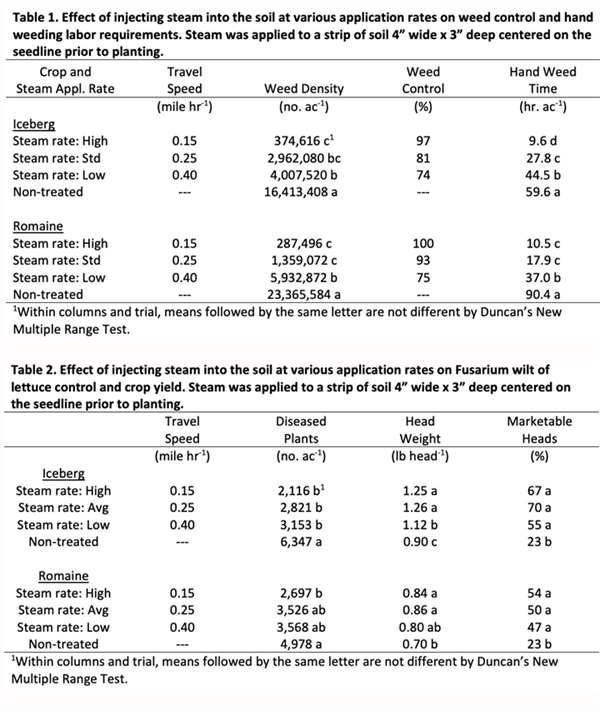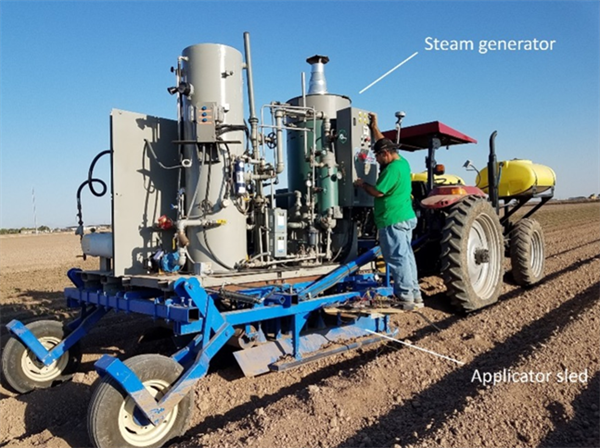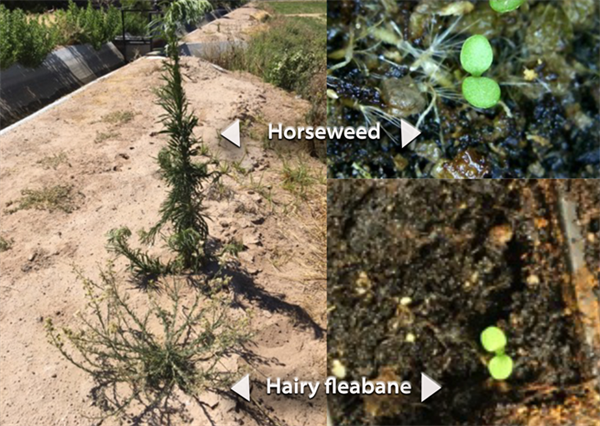



It’s unfortunately a very great season to be a plant pathologist…
We have confirmed the first sample of Fusarium wilt on lettuce submitted to the Yuma Plant Health Clinic from Yuma County. The stunted seedlings looked like any other typical case of damping-off at the seedling stage. When plated on culture media, subsequently confirmed Fusarium colonies grew abundantly from the declining plant tissues. If you’re not already on guard and scouting, this is a warning that Fusarium is active in Yuma County.
Adding on to this early alert, we’ve received a surge of submissions of young brassicas to the clinic. Several severely wilted and declining plants from around Yuma County have cultured positive for Pythium, likely as an opportunistic invader coming in on the back of all the early-season rain that brought stress to seeds and young transplants. Growers may want to consider oomycides, but only if the seedling disease is first confirmed to be Pythium. Remember, many seedling diseases caused by true fungi are indistinguishable from those caused by Pythium.
If you have any concerns regarding the health of your plants/crops please consider submitting samples to the Yuma Plant Health Clinic for diagnostic service or booking a field visit with me:
Chris Detranaltes
Cooperative Extension – Yuma County
Email: cdetranaltes@arizona.edu
Cell: 602-689-7328
6425 W 8th St Yuma, Arizona 85364 – Room 109
Last fall, we established trials investigating the use of band-steam to control weeds and Fusarium wilt of lettuce in iceberg and romaine lettuce. Band-steam is where, prior to planting, steam is injected in narrow bands, centered on the seedline to raise soil temperatures to levels sufficient to kill weed seed and soilborne pathogens (>140 °F for > 20 minutes). After the soil cools (<1 day), the crop is planted into the strips of disinfested soil.
In the study, we utilized the prototype band-steam applicator (Fig. 1) described in a previous UA Veg IPM articles (Vol. 11 (13) to inject steam into the soil as beds are shaped. The steam applicator was configured to treat a 4” wide by 3” deep band of soil. Three rates of steam (Low, Standard, High) were applied by varying travel speed. The “Standard” rate was where steam was applied at rates needed to reach the target soil temperatures (>140 °F for > 20 minutes). Higher and lower applications rate were examined to ensure target temperatures were met/exceeded to get a better understanding of the efficacy of steam treatment, and to determine if higher travel speeds (less fuel consumption) could be used and still provide effective pest control.
Results showed that application of steam was highly effective at controlling weeds (nettleleaf goosefoot predominant species). At the Standard application rate, over 80% of the weeds were controlled. At High application rates, weed control approached 100%. What was particularly encouraging was that at the Low steam application rate where travel speeds were 60% faster than Standard, and target temperatures were not met, weed control was still very good – about 75%.
Steam treatment was also effective at controlling Fusarium wilt of lettuce. Disease incidence in iceberg and romaine lettuce were reduced by more than 50% as compared to the untreated control (Table 2). Crop plants were noticeably larger and more vigorous throughout the growing season in all steam treated plots (Fig. 2). At the Standard and High application rates of steam, this translated into significant yield increases in iceberg (>300%) and romaine (>90%) lettuce. Significant yield increases were also found at the Low application rate of steam – iceberg (>200%) and romaine (>60%).
The results are very promising, but it is important to note that steam treatment is not an end-all cure for Fusarium wilt disease. At the trial site, disease inoculum levels were considered moderate. However, when inoculum levels are very high, our trials have shown that a 4” wide by 3” band of soil is not effective at controlling the disease. We hypothesize that a wider and/or deeper band of treated soil is needed for effective control. This fall, we will be initiating trials to examine this. We will also be investigating the use of band steam to control pythium and nematodes in carrot. Trial results will be presented in future articles - so Stay Tuned.
As always, if you are interested in seeing the machine operate or would like to test the machine on your farm, please feel free to contact me.
Acknowledgements
This work is supported by the Arizona Specialty Crop Block Grant Program and the Arizona Iceberg Lettuce Research Council. We greatly appreciate their support. Any opinions, findings, conclusions, or recommendations expressed in this publication are those of the author(s) and do not necessarily reflect the view of the U.S. Department of Agriculture.


Fig. 1. Band-steam applicator principally comprising a 35 BHP steam generator mounted on a bed-shaper applicator sled.

Fig. 2. Iceberg lettuce planted in beds treated with steam (left) prior to planting and untreated (right).
Hairy fleabane is a summer annual weed from the Asteraceae family and occasional biennial in our area found in cultivated areas and citrus orchards, alfalfa fields, roadsides and ditch banks, landscapes and around buildings. The seedlings are oval to egg shaped and very similar in size (~0.4-0.8mm) to horseweed (Conyza canadiensis), which makes it very hard to distinguish one from the other in the field.
Hairy fleabane grows about 4 feet, branches from the bottom and leaves are pubescent also stems are covered with stiff hairs. The growth habits of horseweed (marestail) are different in that they grow up to 10 feet tall and branches from the upper half of the plant.
You can find Fleabane flowering right now in the Yuma area especially the Yuma Mesa. The IPM Team has received calls from our friends PCAs and growers stating that the Fleabane survives the application of Glyphosate, which has been reported for both conyzas. So, we got some trials in progress looking for options to control Fleabane as well as other weeds that have shown tolerance to Roundup such as White sweet clover or malva in different crops.
The results from the evaluations will be shared in this newsletter.

Reference:
1. UC/IPM Retrieved from http://ipm.ucanr.edu/PMG/WEEDS/hairy_fleabane.html
This time of year, John would often highlight Lepidopteran pests in the field and remind us of the importance of rotating insecticide modes of action. With worm pressure present in local crops, it’s a good time to revisit resistance management practices and ensure we’re protecting the effectiveness of these tools for seasons to come. For detailed guidelines, see Insecticide Resistance Management for Beet Armyworm, Cabbage Looper, and Diamondback Moth in Desert Produce Crops .
VegIPM Update Vol. 16, Num. 20
Oct. 1, 2025
Results of pheromone and sticky trap catches below!!
Corn earworm: CEW moth counts declined across all traps from last collection; average for this time of year.
Beet armyworm: BAW moth increased over the last two weeks; below average for this early produce season.
Cabbage looper: Cabbage looper counts increased in the last two collections; below average for mid-late September.
Diamondback moth: a few DBM moths were caught in the traps; consistent with previous years.
Whitefly: Adult movement decreased in most locations over the last two weeks, about average for this time of year.
Thrips: Thrips adult activity increased over the last two collections, typical for late September.
Aphids: Aphid movement absent so far; anticipate activity to pick up when winds begin blowing from N-NW.
Leafminers: Adult activity increased over the last two weeks, about average for this time of year.







